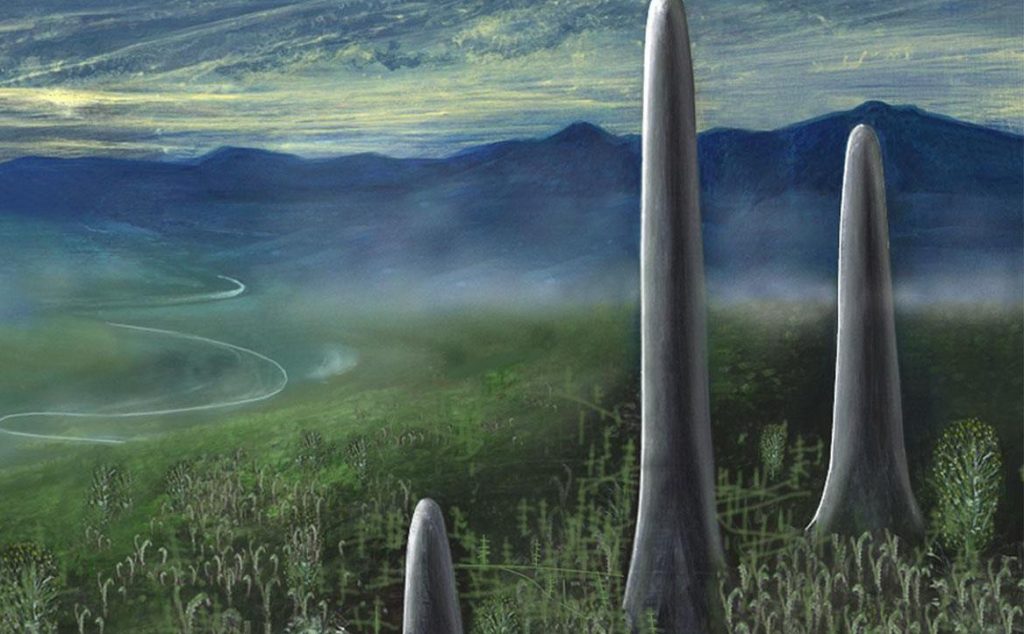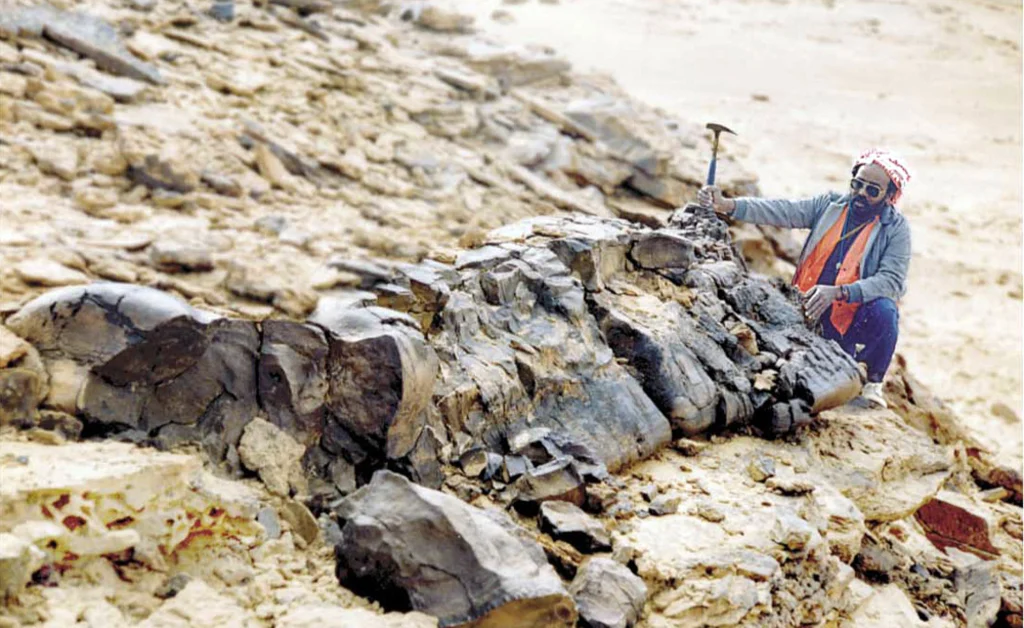There is much written about the prehistoric ancestors of mammals, reptiles, birds and other organisms. But what of fungi?

Until recently, not much fungi was known to have survived from the prehistoric era, which is perhaps odd given its ubiquity today. On closer examination, however, tiny microscopic fungal threads (hyphae) have been found fossilised and captured in amber. There is often debate about whether this type of structure is a true fungus or a similar organism (for instance, filamentous algae).
In 2020, a team of researchers announced that they had identified fungal filaments within a fossil dated to between 715 and 810 million years ago. The group used fluorescent dye and a particle accelerator to find chitin within the sample. Another paper published the same year suggested that microscopic fungi may have been present in the Arctic over 1 billion years ago. Fungal-like structures have even been found as far back as 2.4 billion years ago, implying that the kingdom may be much older than we currently know. There is some evidence to support the idea that the formation of coal was essentially halted by fungi developing the ability to digest wood.
But what of the larger fungal structures? Where were the mushrooms in the fossil record? We know that most fungi do not fossilise well, but in the late 20th century (specimen collected in 1843) scientists began to look more closely at a large plant-like organism (Prototaxites) that was originally thought to be an algae or conifer-like tree. Evidence presented by Hueber in 2007 concluded that, based on the preserved morphology, Prototaxites was a fungus. This would have been a huge tree-like organism, predating the development of the trees we see today. We can therefore envisage that hundreds of millions of years ago fungi dominated the land and sea (both in quantity and physical size). They would have been well-placed to take advantage of the arrival of newer life forms, including trees and even animals.

The genus Prototaxites describes terrestrial organisms known only from fossils dating from the Silurian and Devonian, approximately 420 to 370 million years ago. Prototaxites formed large trunk-like structures up to 1 metre (3 ft) wide, reaching 8 metres (26 ft) in height, made up of interwoven tubes just 50 micrometres (0.0020 in) in diameter. Whilst traditionally very difficult to assign to an extant group of organisms, current opinion is converging to fungal placement for the genus. It might have had an algal symbiont , which would make it a lichen rather than a fungus in the strict sense.
– Wikipedia

Prehistoric fungi sources
- The emergence of invasive fungal diseases among humans
- The Role of Drugs in Prehistory:
- 100-Million-Year-Old Fossil Suggests Dinosaurs Feasted On Fungus To Get High
- Fossil Fungi
- Fungi in Prehistoric Poo
- Ancient plant-fungal partnerships reveal how the world became green
- Evolution: prehistoric fungus could explain the end of coal formation
- Prehistoric meat-eating fungus snared microscopic worms
- Prototaxites: A Giant that Never Was?
- How old is Kingdom fungi?
- A fossil specimen collected by Charles Darwin’s friend Joseph Dalton Hooker, was mislaid for 163 years at the British Geological Survey offices in London
- Prototaxites
Prehistoric articles
-
Title
Author
Year
-
Fertile Prototaxites taiti: a basal ascomycete with inoperculate, polysporous asci lacking croziers.
Honegger R, Edwards D, Axe L, Strullu-Derrien C.
2018
-
Strullu-Derrien C, Spencer ART, Goral T, Dee J, Honegger R, Kenrick P, Longcore JE, Berbee ML.
2018
-
Krings M, Harper CJ, Taylor EL.
2018
-
Mills BJW, Batterman SA, Field KJ.
2018
-
Dana Elhottová, Václav Krisˇtu˚fek, Jan Frouz, Alena Nováková and Alica Chronˇáková
2006
-
Erik A. Hobbie1,* and C. Kevin Boyce2
2010
-
DIANNE EDWARDS* andLINDSEY AXE
2012
-
John W. Taylor1 & Mary L. Berbee
2006
